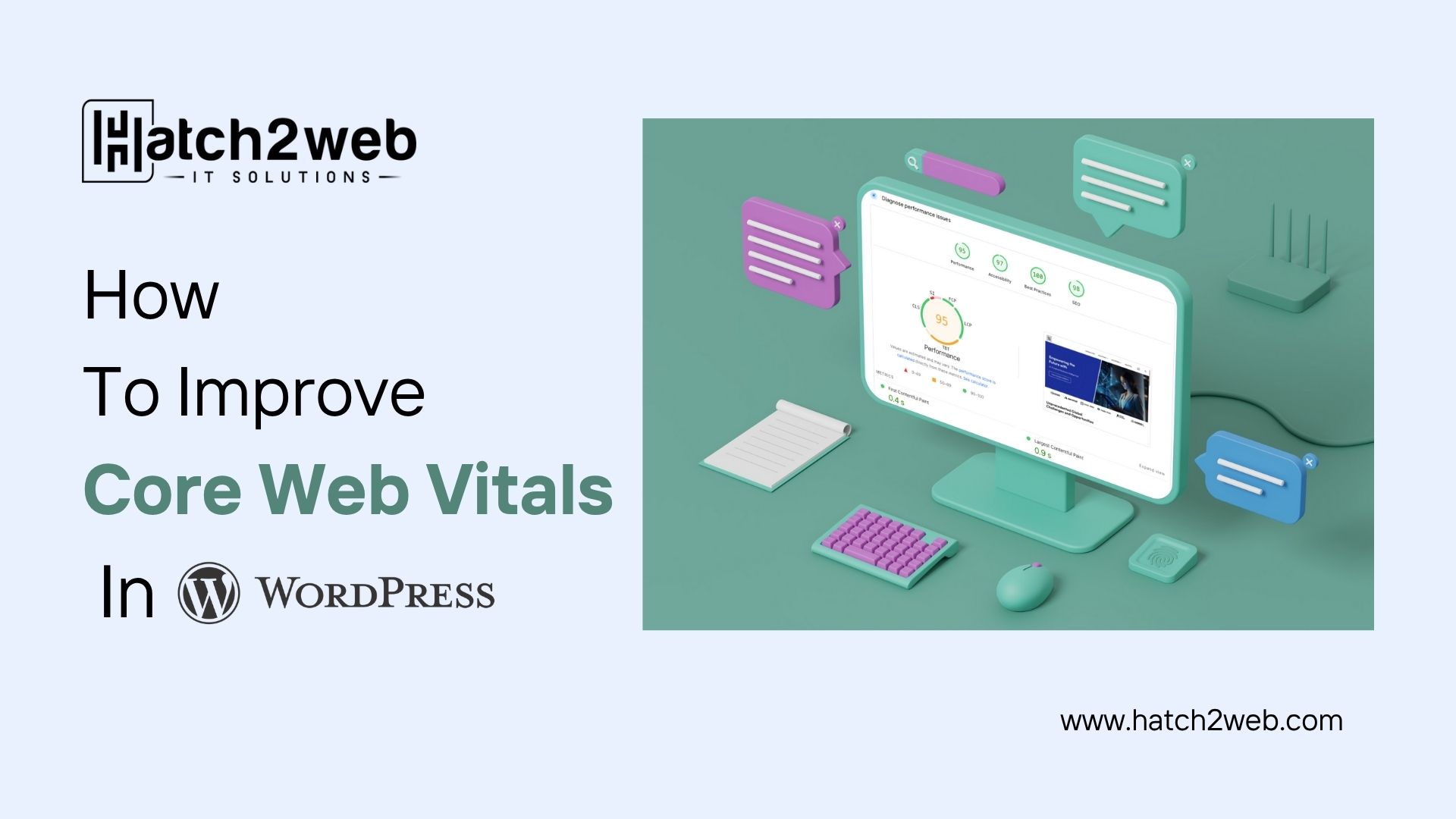Have you ever opened a website that takes forever to load or keeps moving around while you’re trying to click something? Annoying, right? Most people just leave—and Google doesn’t like that either.
That’s why Core Web Vitals matter. They show how fast your site loads, how quickly it responds, and how smooth everything feels for visitors.
If you use WordPress, improving these vitals isn’t only about ranking better on Google. It’s also about giving people a smooth, stress-free experience so they actually enjoy using your site.
In this guide, we’ll share simple and practical tips to improve Core Web Vitals on your WordPress site—no complicated tech talk, just easy steps you can follow.
What Are Core Web Vitals?
Google uses three main metrics to measure website performance:
- Largest Contentful Paint (LCP): How quickly the main content on your page loads.
- Good: under 2.5 seconds
- Good: under 2.5 seconds
- First Input Delay (FID): How fast your site responds when a visitor interacts (like clicking a button).
- Good: under 100 milliseconds
- Good: under 100 milliseconds
- Cumulative Layout Shift (CLS): How stable your page looks while loading (no annoying jumping elements).
- Good: 0.1 or less
4. Interaction to Next Paint (INP): Measures how quickly your site responds to all user interactions, like clicks, taps, or scrolls. It replaces the older FID metric.
- Good: under 200 milliseconds
(Tip: Google is now replacing FID with a new metric called INP for measuring interactivity.)
Why Core Web Vitals Matter
- Better SEO: Google uses these metrics to rank websites. A fast site = better chances of ranking higher.
- Better user experience: Visitors are happier on a fast, stable site.
- More conversions: A smooth website keeps people engaged and increases sales, sign-ups, or leads.
How to Improve Core Web Vitals in WordPress
Here are practical ways to boost your scores:
1. Critical Rendering Path Optimization
- Identify the critical CSS and JS required for above-the-fold content and inline it to reduce render-blocking requests.
- Defer or asynchronously load non-critical JavaScript using async or defer attributes.
- Reduce CSS specificity and size to speed up browser parsing.
2. Server-Side Performance Enhancements
- Use HTTP/3 and QUIC protocol for faster connections, especially for mobile users.
- Enable gzip or Brotli compression to reduce asset sizes.
- Optimize the PHP execution path: Upgrade PHP to the latest stable version, reduce heavy plugins, and optimize database queries.
- Implement object caching with Redis or Memcached to reduce server response times.
3. Advanced Image and Video Optimization

- Serve images in next-gen formats (WebP or AVIF).
- Use responsive images (srcset) to deliver proper image sizes based on device viewport.
- Lazy-load background images and videos using Intersection Observer API.
- Implement content-aware image compression to reduce LCP.
4. JavaScript and CSS Management
- Remove unused JS/CSS using tools like PurgeCSS or WP Asset Cleanup.
- Split long JS bundles using code splitting (via Webpack or similar) to reduce main-thread blocking.
- Convert heavy animations from JS to CSS-based animations for smoother rendering.
- Minimize third-party scripts, or load them after user interaction (e.g., chatbots, analytics).
5. Web Font Optimization
- Serve fonts locally to reduce external requests.
- Use font-display: swap to prevent invisible text during font loading.
- Use variable fonts to reduce multiple font file requests.
- Preload key fonts using <link rel=”preload” as=”font”>.
6. HTTP/2 or HTTP/3 Push
- Use server push for critical resources like hero images, CSS, and fonts.
- Combine and minify assets where appropriate, but use HTTP/2 multiplexing to avoid unnecessary concatenation.
7. Database Optimization
- Remove post revisions, transients, and unused metadata to reduce query load.
- Index frequently queried database tables for faster response.
- Use persistent object caching (Redis/Memcached) for high-traffic sites.
8. Edge and CDN Optimizations
- Use a CDN with edge caching to serve content closer to the user.
- Enable image optimization at the edge for faster delivery.
- Leverage geo-routing and latency-based caching for global users.
9. Lazy Loading and Preloading Strategy
- Lazy-load off-screen images, videos, and iframes to improve LCP.
- Preload critical assets such as hero images, fonts, and CSS for faster first render.
- Use <link rel=”prefetch”> and <link rel=”preconnect”> to improve connection setup for external resources.
10. Advanced Monitoring and Automation
- Implement real user monitoring (RUM) tools to track LCP, INP, and CLS in production.
- Use synthetic testing with Lighthouse CI or WebPageTest API to continuously monitor performance.
- Set up automated performance regression alerts on deploys to catch issues before they affect Core Web Vitals.
Final Thoughts
Improving Core Web Vitals on WordPress doesn’t have to be complicated. Focus on fast hosting, optimized images, stable layouts, and reduced scripts, and your site will load faster, respond better, and feel smoother for visitors.
A better-performing site means happier users, higher SEO rankings, and more conversions.
At Hatch2Web, we help WordPress sites become faster, more stable, and fully optimized for Core Web Vitals. Contact us today to make your website lightning-fast!




